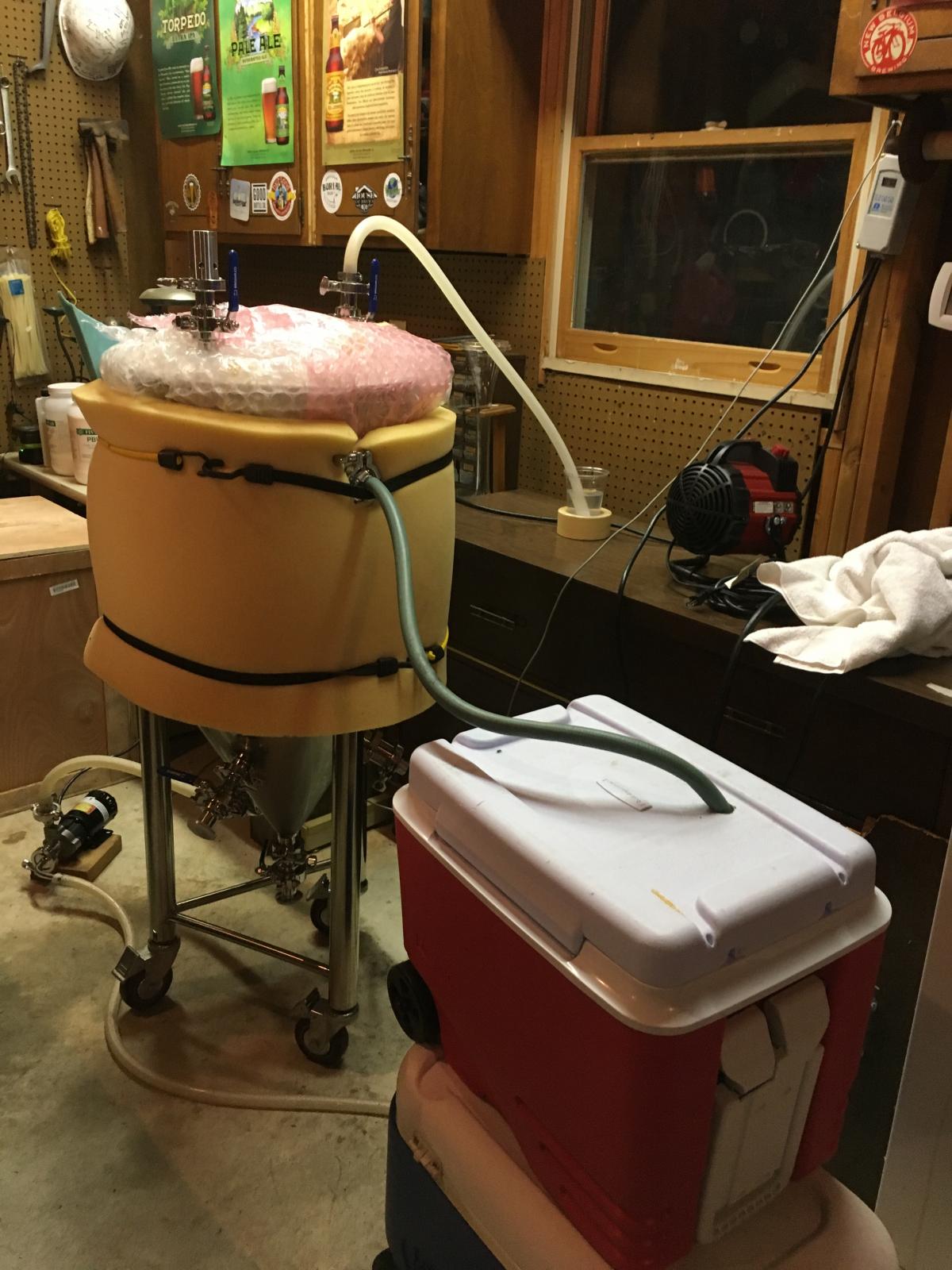Jubalon on your BCS can you share any best practices for temp management? I have a full BCS control nit I have been slowly modifying to work with the BIAC and I think, but I am not positive I am now able to get it to cycle the element at lower power (3%) when I dont want to scorch anything. I am curios what others may be using in this area outside of Nathan's model (which is severely lacking)
TL;DR: Aside from the boil State, all of my hot side temp control is via PID with the pump On - except for during kettle souring, where PID is used but the pump is off. Cold side is all Hysteresis/Cool. I use the element kit supplied by Nathan and have had no problems with scorching. Read on if you want details.
Caveat, I don't think I'm using the BCS to its full potential wrt to automation (I change between states and processes manually), so I'm sure process improvements exist. This works for me, though. Also please note I use a control panel with physical switches that allow me to interrupt the output signals from the BCS as a backup safety measure. I'm also going to assume you're familiar with BCS terminology and wiring practices. With those disclaimers out of the way, here goes...
I've got three Processes defined: Mash, Boil, and Fermentation. I have one Temperature Probe and two Outputs (Pump and Element) which control SSRs that in turn control electrical outlets mounted to my panel.
Mash: Two states, Strike Heating and Mashing. In both, I have my pump output in Direct Mode, permanently set to On. Element output is in PID Mode, set to whatever I want my strike or mash temp to be depending on what state I'm in.
Boil: Three states, Boil Heating, Boil, Hop Stand. Again, pump output is Direct On in all three. In Boil Heating the element output is PID controlled with a setpoint of 208*F; in Boil I use a 75% duty cycle to keep a vigorous boil; for Hop Stand the element out is PID controlled to 160*F.
Fermentation: For this I disconnect the Chugger pump from my BCS-controlled outlet and plug in a submersible pump which sits in an igloo cooler full of ice water. Pump out goes to the jacket inlet, and jacket outlet goes back to the cooler courtesy of silicone tubing. On the BCS I have the pump Output in Hysteresis/Cool Mode, set to whatever temp I want with a 0.5 degree Swing. I have a few different States set up with some of my frequently used temps, and a Cold Crash state preset to 45*F.


























































![Craft A Brew - Safale S-04 Dry Yeast - Fermentis - English Ale Dry Yeast - For English and American Ales and Hard Apple Ciders - Ingredients for Home Brewing - Beer Making Supplies - [1 Pack]](https://m.media-amazon.com/images/I/41fVGNh6JfL._SL500_.jpg)

